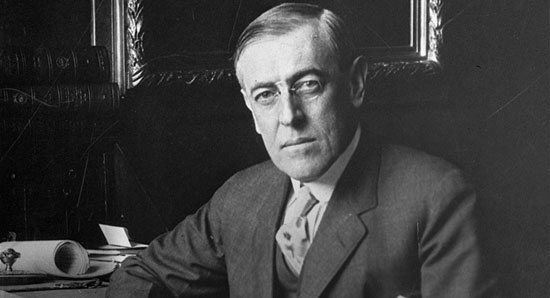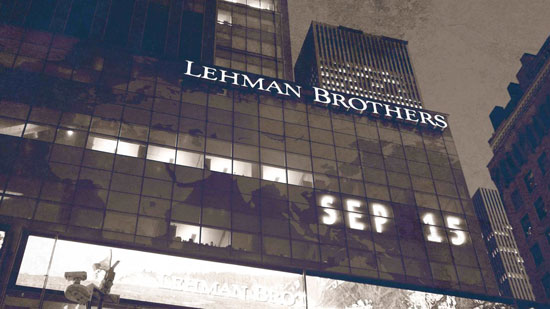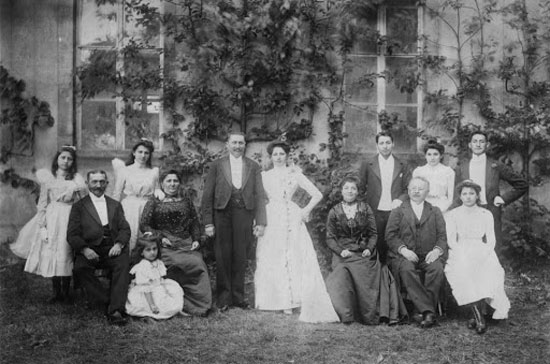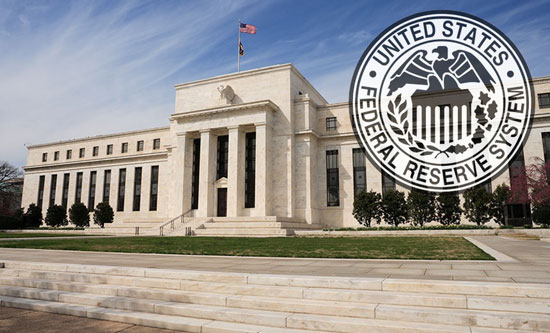American History of the Rothschilds and the Eight Most Powerful Families (3)
Read the second part of the article
The Untermyer Blackmail
Perhaps Woodrow Wilson didn’t want a new national bank, perhaps he wanted to keep things as they had been since Jackson’s days. There’s a good chance that he couldn’t have even if he’d wanted to, however, and an incident during his very first days in office illustrates this.

Woodrow Wilson
Wilson was visited by Samuel Untermyer of the Guggenheim, Untermyer, and Marshall law firm. Untermyer was well-known in the Democratic Party, had advised the government on interpreting and enforcing income tax law, was also involved in anti-trust legislation. He believed in government ownership and helped prepare the Federal Reserve Bank Law, the Creighton Bill, Federal Trade Commission Bill and other legislation that limited the power of the trusts. That day, however, the man had something else on his agenda.
Untermyer had three letters that Wilson had written to a woman he’d been having an affair with while he was still at Princeton. Untermyer informed Wilson that the woman’s husband wanted $40,000 to keep the affair quiet.
Wilson, however, didn’t have the money. Luckily for him, Untermyer offered to pay the money himself, so long as Wilson agreed to let him pick the first Supreme Court pick that came Wilson’s way. It was agreed, and as a result Louis Brandeis was appointed, someone that was very influential in Wilson’s decision to put America into WWI.
Having world wars was very important to the Illuminati, the secret society that the Rothschild’s had created back in 1776. Nothing created more long-term debt obligations than war, and no form of debt was more secure than that backed by taxpayers.
It’s a lot to swallow, the truth. The Illuminati knew it would be, so that’s why they set up the Anti-Defamation League in 1913, so that anyone speaking out against the Rothschild’s or the Illuminati would be labeled as anti-semitic, anti-Jew.
All the while, however, the nation has suffered, and slid ever more into debt.
The Federal Reserve Act of 1913 was signed into law by Woodrow Wilson on December 23, 1913. For the first time in 135 years the United States had a national bank.
Before Woodrow Wilson had put the nation in war, the country had but $3.6 billion in national debt. By 1918 that was $14 billion and in 1919 it was $27 billion. Things settled down after that and the debt was actually paid down all through the 1920s, to $16 billion by the time of the Crash. Interest payments of 2.5% would run to $400 million a year on that level of debt, any bankers’ dream come true.
For the Rothschild’s that’s exactly what it was, and the clandestine banking family was fast becoming one of the most powerful players on the world stage, and one that hardly anyone knew about. They controlled the Federal Reserve and Montana began to suffer soon after.
The House of Morgan
J.P. Morgan died in 1913, the same year both the Federal Reserve and the Rockefeller Foundation were formed. Morgan was the closest America had come to a national bank from the time the Second Bank of the United States closed in 1836 and the Federal Reserve opened in 1913.
The House of Morgan can trace its roots back to 1838 when George Peabody, a business associate of the Rothschilds, founded it.
‟In this regard, the House of Morgan was nothing more than the American wing of the Rothschild’s banking empire.ˮ (Henderson, p 450-1)
‟When Morgan got control of the nation’s gold in 1895, he had control of the business climate. Mergers began to pick up pace as businesses started to swallow one another.
In 1897 there had been just sixty-nine mergers but by 1899 there were 1,200, an increase of 1700%. All of this allowed the power of the corporations and the banks that funded them to expand, something that created the Eight Families.ˮ (Henderson, p 452)
The Eight Families

The Eight Families are the Goldman Sachs, Rockefellers, Lehmans, and Kuhn Loebs of New York, which is the American side.
The European side consists of the Rothschilds of Paris and London, the Warburgs of Hamburg, the Lazards of Paris and the Israel Moses Seifs of Rome.
Benjamin Strong was the first Governor of the New York Federal Reserve Board, the most powerful of all the Federal Reserve’s banks, and someone closely allied with the Eight Families.
What this meant for the country is spelled out very well by Dean Henderson:
“The 1913 creation of the Federal Reserve fused the power of the Eight Families to the military and diplomatic might of the US government.
If overseas debt went unpaid, the oligarchs could now deploy US Marines to collect their money. Morgan, Chase and Citibank soon formed an international lending syndicate.” (p 452)
We’ve already discussed the Rothschilds, a family that was very close to the Kuhn Loebs. The family of Kuhn Loeb came about in 1785 when the family teamed up with both leading banker Jacob Schiff and the Rothschilds. The Schiff/Loeb relationship was cemented in 1865 through marriage.
In 1867 Kuhn, Loeb & Co. was founded with Jacob Schiff in charge. The firm had been based in Ohio but moved to New York and did well in the merchandise business.
As the 1880s started they, like many first looking for easy investments, got into railroads. Kuhn Leob had been the banker for Edward Harriman, one of the main moves and shakers in the American railroad industry. After battling J.P. Morgan and James J. Hill, Schiff was able to gain control of the Northern Pacific Railroad in 1901.
‟By 1911 they’d joined with the Rockefellers to take over Equitable Trust Company, the precursor to Chase Bank.
They also partnered with the Warburgs during this time and married into the Goldman Sachs and Lehman families.ˮ (Henderson, p 465)
The Warburg family was a Venetian banking family of the 1500s, one that came to prominence in 1814 after teaming up with the Rothschilds.
The Rockefeller Family can trace its origins to John Davison Rockefeller, who was born in 1839 in New York. The family eventually moved to Ohio, and it was there that Rockefeller got involved with oil in 1863.
By 1870 Rockefeller had started Standard Oil of Ohio with an initial investment of $1 million, making it the largest corporation in the country. When the Panic of 1873 hit, Rockefeller bought up many smaller oil producers and by 1877 he controlled nearly 90% of oil production in America. By the 1880s Standard Oil trust was formed and the company began to expand overseas, particularly Europe and Asia.
The Rockefellers made it through the trust busting days of the 1890s, the Panic of 1893, and into the new century. Standard Oil was so large by that point, and had so many offshoots, that it was virtually unstoppable.
The Rockefellers had enormous wealth as well, and $100 million of that was funneled into the Rockefeller Foundation in 1913 to “promote the wellbeing of mankind throughout the world.”
The Lazard family came on the scene in 1848 when Alexandre, Lazare, and Simon Lazard started Lazard Frères & Co., a New Orleans firm that specialized in dry goods. They were successful and in just a few years branched out to both New York and San Francisco. The family profited handsomely from the American Civil War and moved into banking before branching out to their native France and then into England. By this time the real power behind the business was Alexander Weill, a family cousin.
Over time these “Houses of Lazard” had much influence and like the other families, they began to build connections to other powerful businessmen and industrialists. It was in Paris that the Rothschild connection was made, in 1897 when the family joined the Rothschild bank.

The Lazards
Philip Lehman started Lehman Brothers in 1850. The Lehman family can trace their roots back to Bavaria in the early-1800s, and specifically Abraham Lehmann, who was a cattle merchant.
In 1844 Abraham’s son, Henry Lehman, came to America and settled in Alabama. In 1847 his brother Emanuel Lehman came over and then in 1850 brother Mayer Lehman came over. That was the year they changed their name to Lehman Brothers.
The brothers got heavily into cotton and profited handsomely during the Civil War. Following that they moved up to New York, in 1870, to start the New York Cotton Exchange. By 1906 Lehman Brothers had partnered with Goldman, Sachs & Co., beginning a decades-long relationship in stock buying that proved extremely lucrative for both families.
Samuel Sachs was very good friends with Philip Lehman. Goldman Sachs first started as a bank in New York in 1869. Marcus Goldman had been the man behind it, and in 1882 his daughter married Samuel Sachs. By 1885 the firm had changed its name to Goldman Sachs & Co. and started striking it rich with paper products.
Israel Moses Seiff was born in 1889 in England. His father had come from Lithuania and done wall at business, giving the younger Seiff a good start. From there the Seiff family got into banking and was heavily active in the Zionist Movement to see a Jewish state started in the Middle East.
There are twelve Federal Reserve branches, named:
• N.M. Rothschild of London;
• Rothschild Bank of Berlin;
• Warburg Bank of Hamburg;
• Warburg Bank of Amsterdam;
• Lehman Brothers of New York;
• Lazard Brothers of Paris;
• Kuhn Loeb Bank of New York;
• Israel Moses Seif Bank of Italy;
• Goldman Sachs of New York;
• Rockefellers’s J.P. Morgan Chase Bank of New York.
We know these banks are in control as J.W. McCallister, an oil insider associated with the House of Saud, wrote as much in his book The Grim Reaper.
‟He also revealed that the Saudi Royal Family owns 80% of the New York Federal Reserve Bank, the most powerful in the American wing of the international banking system.ˮ (Henderson, p 451)
Israel and Saudi Arabia: Best Friends Forever (Zionism/the Rothschilds Created Both States).
Federal Reserve Impact on Montana

The Federal Reserve played havoc in Montana. Over six years from 1920 to 1926 there were 214 banks in Montana that went under, half of all in the state, and more than anywhere else in the country.
On top of this there were 20,000 mortgage foreclosures in Montana from 1919 to 1925 and that meant half of the people in the state lost their land, and often homes.
The problem was that Montana had too many banks, plain and simple, and the reason for this was the Federal Reserve, the third Rothschild-controlled bank the country had seen, and the one that would do more damage than the other two combined.
In 1917 alone forty-one new national banks came to Montana, often competing with state banks in towns of just a few hundred people.
Those on the East Coast saw the writing on the wall and took their money out fast. About $30 million fled the state as investors back East took what they could before losing it all.
Montanans weren’t so lucky, and 11,000 farms failed as mortgage debt soared to $175 million. Montana had more bankruptcies than anywhere else in the country.
The Federal Reserve never forgot its mission to help Americans because that was never its mission. Its mission was to take as much wealth from the American people as possible to benefit the Rothschild family and their cronies.
Moneyed interests back East took a ‘rape-and-pillage’ attitude toward Montana, something they’d developed in the booming mining days of the 1880s and 1890s and one they’d continue to push in the 20th-century and on into the 21st.
yogaesoteric
February 10, 2020
